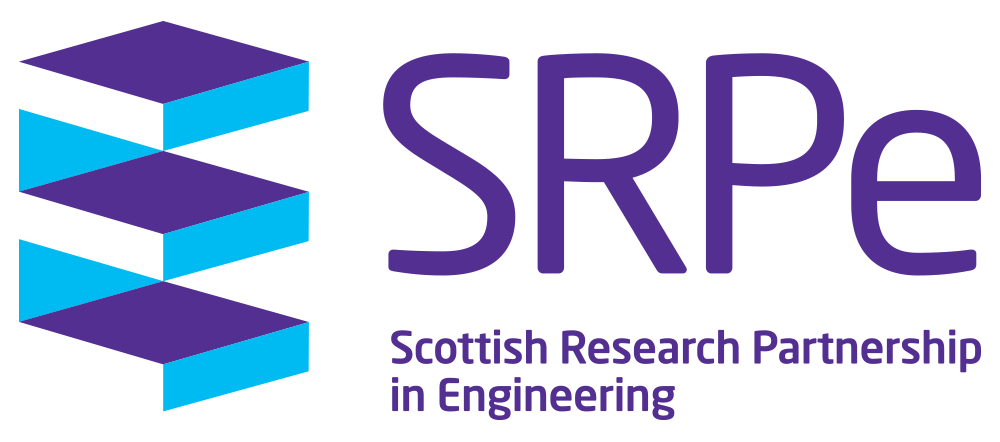Developing Polymer and Polymer Composite Structure for Processing Corrosive Fluids.
Academic Institution: University of Strathclyde
Academic Supervisor: Dr Liu Yang
Industry Partner: The Weir Group PLC
PhD Student: Damilola Aje
Summary:
This project is about investigating the resistance of polymers and polymer composite materials to difference chemical and acidic solution. It involves developing novel lightweight materials that can replace the expensive metallic materials mostly used in harsh process condition. The project entails material characterisations; chemical aging, fatigue characterisation, Creep characterisation and Erosion Characterisation. Chemical aging has been finalised and presented in conference report.
Polymers and polymer composites are gaining more acceptance in mechanical components industry due to the numerous advantages they possess over the traditional metallic materials. The rising cost of maintenance and repair of existing infrastructural systems are driving the push for a more reliable and cost-effective materials. Polymers are regarded to be a lightweight material and coupled with their high strength, are being regarded as the material needed to drive down the ever-rising cost of production and maintenance.
This polymer advantage is very vital, especially in the Aerospace industry where cost saving is desired without jeopardizing the structural integrity of the components. Major companies are now switching into polymer technologies to benefits from its versatile cost saving advantage. Effort is ongoing within most industries in replacing metallic-based components with advanced polymer composites combining with additive manufacturing technology as a productive approach for the next generation of engineering components. The challenge is to develop an alternative high strength polymer product that can replace the heavy-duty metallic components used in most rotating equipment.
Light-weighting is seen as the major source of industrial sustainability in the rotating machinery design because of its numerous advantages which includes; Positive effects on natural frequency, reduction in rotating weight and inertia, shaft and bearing down-sizing, and reduction in alloy material usage, coupled with less energy requirement in the printing of 3D components as against the traditional casting.
Having observed the role of additive manufacturing in other industries such as in aerospace industry, 3D printing has now become a mainstream tool for producing composite parts quickly and efficiently without the usual waste as in the case of traditional manufacturing.
Apart from the common reasons of cost-effectiveness, streamlined and efficient production processes and the time-saving nature of the technology as observed in other industries where this technology have been proven, there are other specific advantages these industries has identified to benefit from 3D polymer technologies. Some of these specific advantages includes better supply chain management, quick turn-around of replacement parts, reduction in operational downtime, and potentially reduce total cost of ownership.
Despite the advancement of this non-metallic material, and the fact it is being currently used in engineering applications such as in pipes, pipelines, and tanks; long-term resistance against hot concentrated chemicals remain extremely challenging for most engineering polymers today.
Design for this type of applications can be further complicated when the polymers will be used to process chemical fluids at elevated temperature. Understanding the structural behaviour of polymers and polymer composites in different working environments is a vital requirement needed to validate the integrity of polymeric materials in structural applications.
This project is aimed to develop a novel design process and manufacturing route to producing corrosion – resistant composite structure for controlling chemical fluids such as phosphoric and sulphuric acids. Four different high-performing pure polymers and polymer composites were selected and presented in this report. They include:
Antero 800 NA – This is a PolyEtherKetoneKetone (PEKK) based thermoplastic with excellent mechanical properties and excellent resistant to most industrial chemicals. They are manufactured by Additive Manufacturing (AM) method known as Fused Deposited Modelling (FDM).
Ultem 1010 – This are high performing Polyetherimide (PEI) thermoplastic with high heat resistant and excellent mechanical properties. They are manufactured by Additive Manufacturing method known as FDM.
Ketron 30% CF – This is a PolyEtherEtherKetone (PEEK) based thermoplastic polymer. Manufactured by injection moulding methods, Ketron is a 30% carbon fiber reinforced grade with excellent stiffness and strength.
Victrex 30% CF – This is a high-performance thermoplastic material which is an Aerospace grade material. It contains 30% carbon fibre reinforced PolyEtherEtherKetone (PEEK) and can be manufactured by injection moulding and extrusion. It is regarded to have a much higher strength and modulus than Ketron.
Key Results/Outcomes:
The four selected materials with all materials tested to at least 2000hrs of chemical conditioning. Acid intake for polymer composites is seen to be less than that in the pure polymers.
The increased fluid intake observed in the pure polymers is due to the presence of voids in the crystals of the pure polymers. Also, comparing the two pure polymers, it is seen that Antero (PEKK) behaved better in the acid solution, in terms of acid intake than, its PEI (Ultem 1010) counterparts. Moreover, for both pure polymers, it is observed that the OnEdge (XZ) printing orientation absorbs less fluid than the Upright (ZX) orientation. Hence, the acid intake is affected by the printing orientation.
The results clearly show that, although, the phosphoric acid solution does not significantly reduce the mechanical properties of the polymers under investigation, they however, degrade significantly with increased temperature.
Material stiffness and strength is very critical when deciding on the materials of construction in structural applications. Also, the effect of continual use of such materials in an operating environment must be put in consideration when making this important decision. The summary of the tensile results has proved that the, for the materials under investigation, the reduction in strength and modulus can be as high as 50% reduction when used in a condition with temperature up to 95oC.
Publications:
Conference Oral Presentation - 20th European Conference on Composite Material (ECCM20)
Poster Presentation - SRPe Conference (Edinburgh 2022)
Technical Paper (Ongoing)- INVESTIGATION OF 3D PRINTED POLYMERS AND MOULDED POLYMER COMPOSITES IN HOT CONCENTRATED ACID.
Contact Information:
Damilola Aje
PhD Student, University of Strathclyde
Dr Liu Yang
Reader, Mechanical and Aerospace Engineering.
